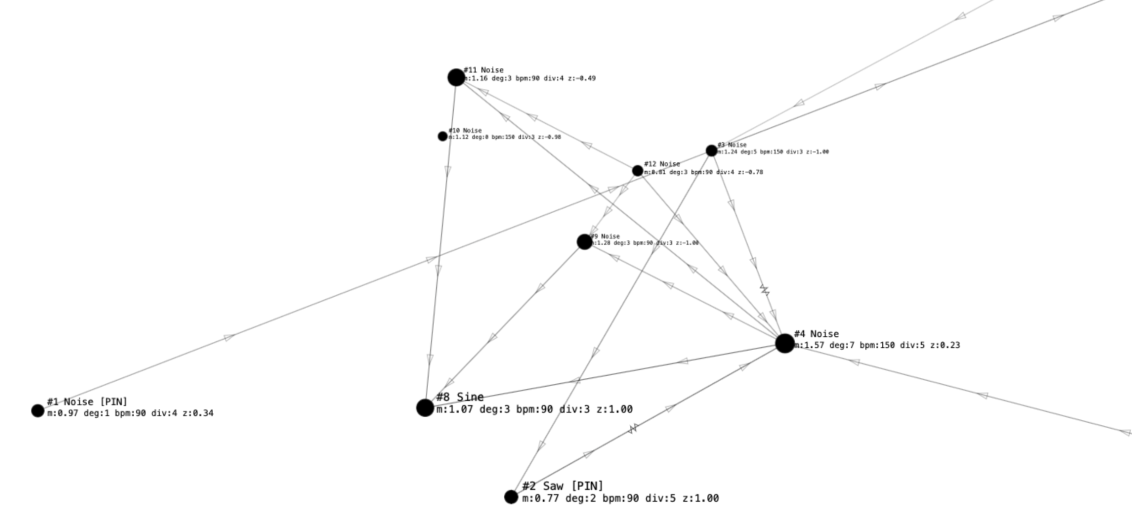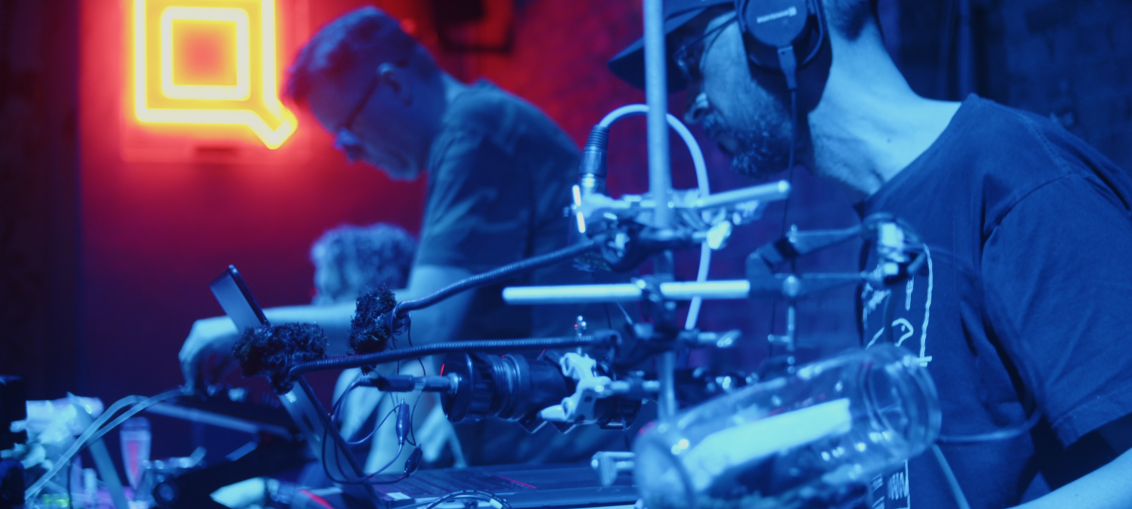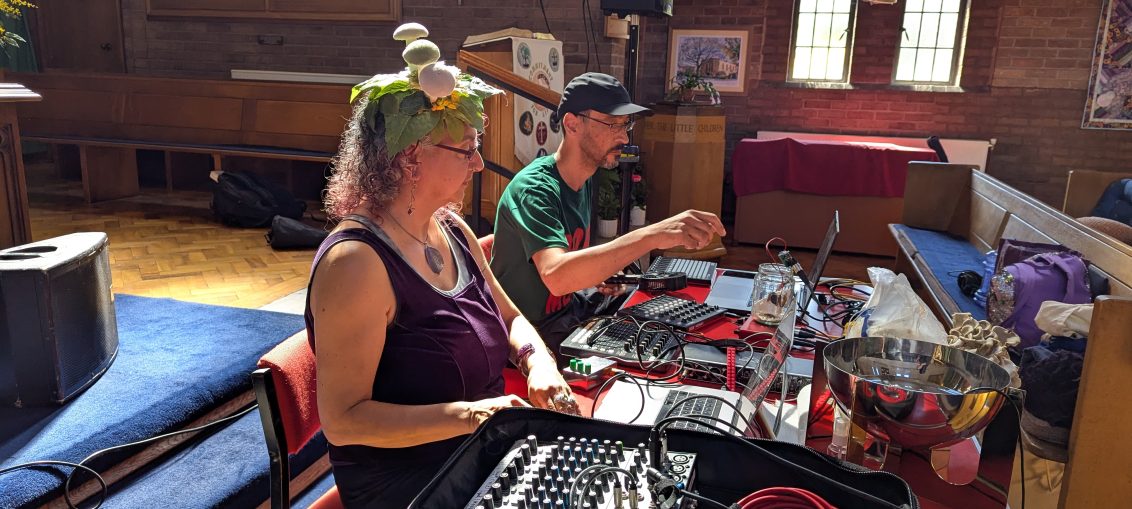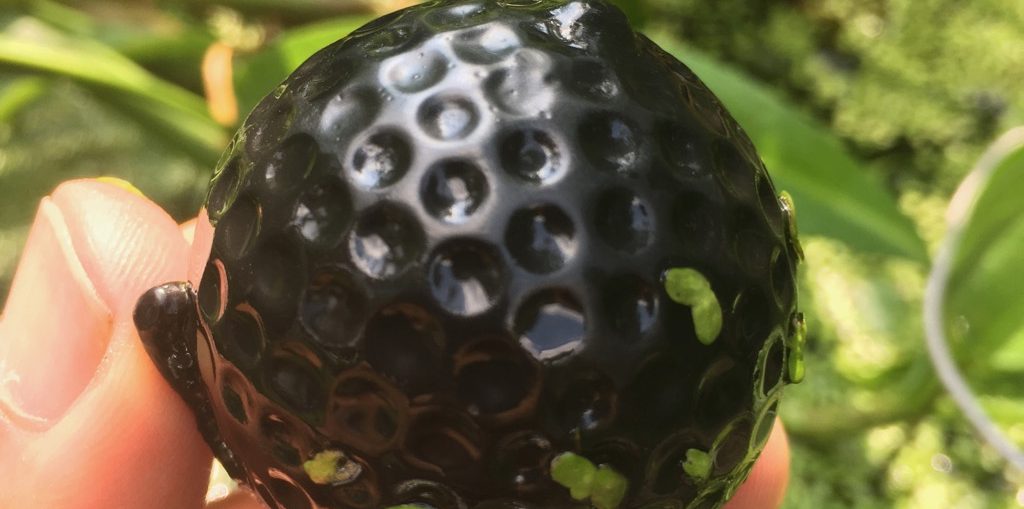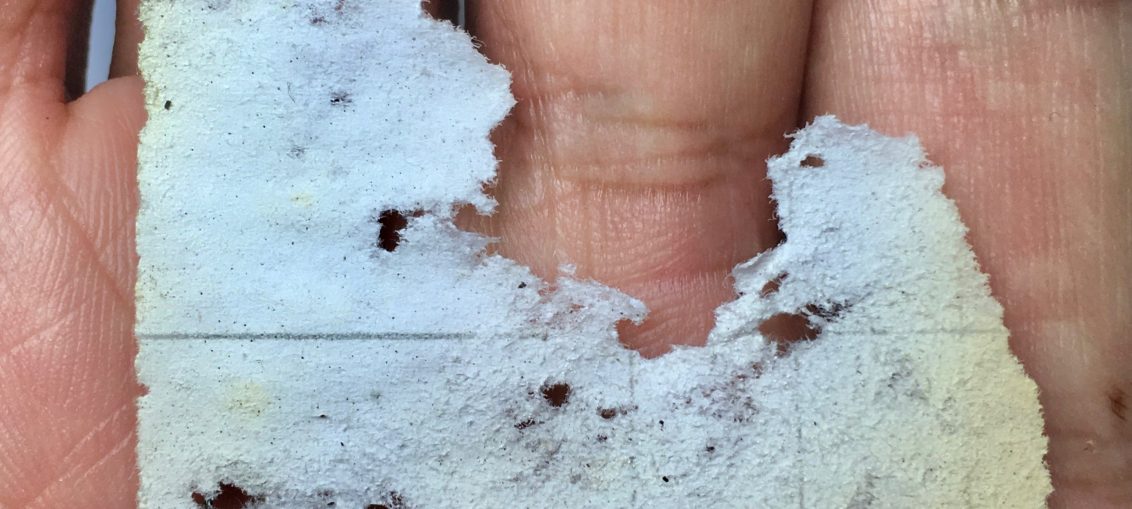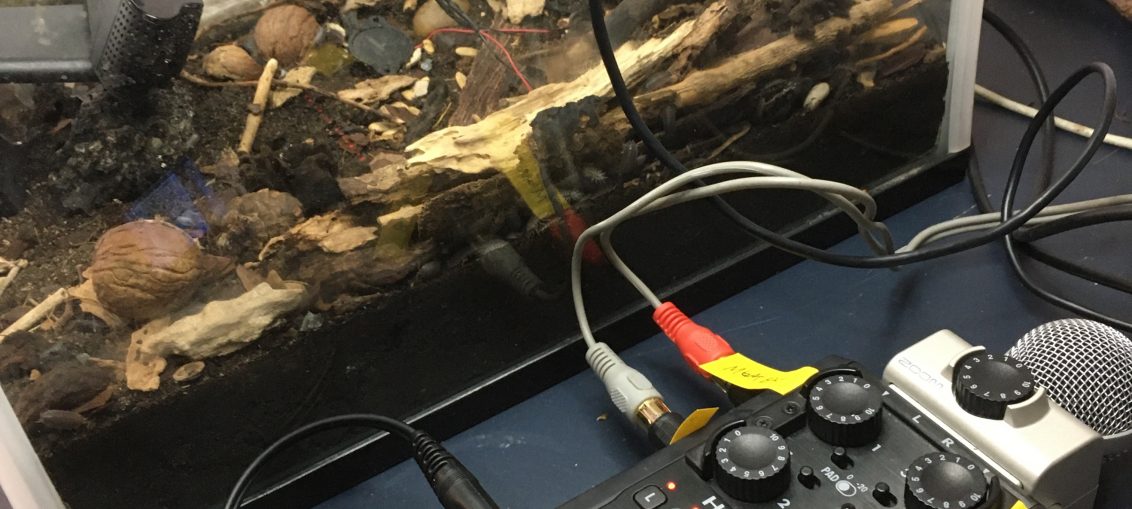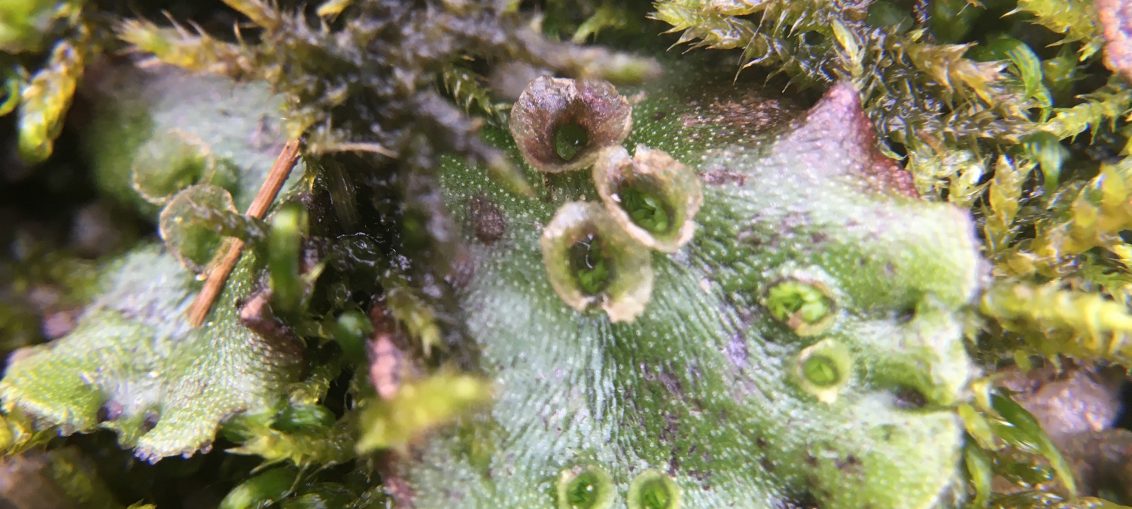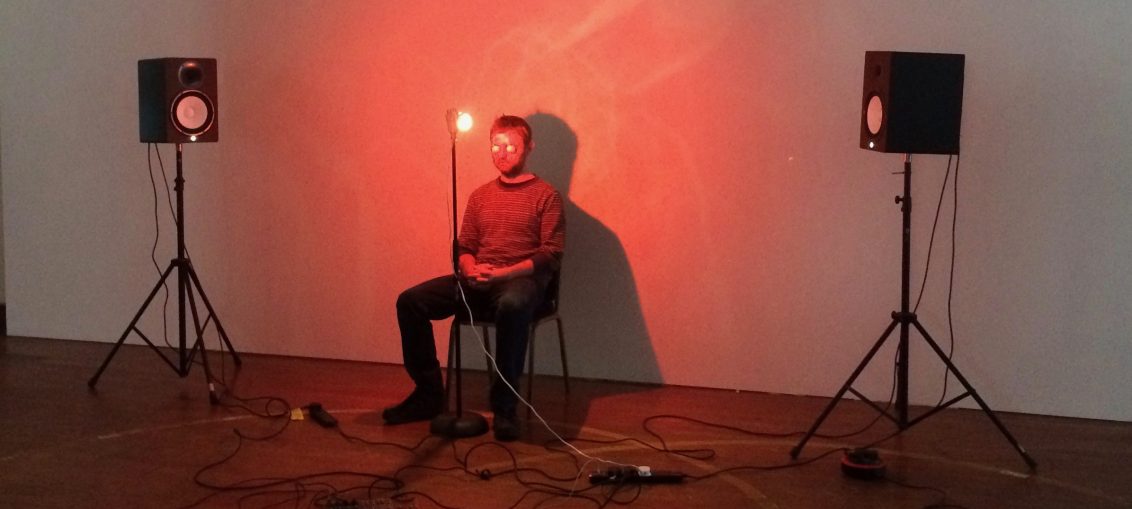This nodal synth project is based on a false memory. I was discussing false memories with friends last night and reflecting on some of my own. I woke up the next day still thinking about this. I often think about something that my friend Ben had shown me years ago, I have this strong memory of connected objects like a circuit diagram or a mechanical network, and of it running like a program and making sound, and I have a distinct image of it which I am pleased to say I have recreated here, sadly its not sounding as good as i hoped but i am still working on it. At the time Ben was studying music and physics, maybe
Tag: sound
Biokinetic Mantra for the Evocation of the Animistic Matrix
live performance with Maya chowdhry and Chris Gladwin. "This 30min live electronic music performance will feature organic components (mushrooms, moss, terrariums, water) being brought into contact with the ecstatic technology of dance music."I have recently returned to performing live and reawakened a part of my brain that had been dormant for a while. I'd forgotten how much I absolutely love the focus and intensity. The excitement of not knowing what's going to happen, or indeed sometimes wondering what is happening when something completely new emerges. Working with new collaborators has pushed me to explore new methods, leading to a number of fresh works in progress. Last month, I performed with Chris Gladwin and Maya Chowdhryat DVRK MASS II | Sonic Transformations: Ecosystems (organised by
Electronic Music Ensemble at Chorlton Arts FestivalElectronic Music Ensemble at
I performed as part of a line up from SODAs electronic music ensemble (which comprises of students, alumni and staff) at Chorlton Arts Festival, in Wilbraham St Ninian’s Church. I performed again alongside Maya Chowdhry continuing the ‘Biokinetic Mantra for the Evocation of the Animistic Matrix’ project - bringing together bioacoustics filed recording live electroaccoustics, and techno. This involved Darkling beetle larvae and rehydrating moss on hydrophones… Image: Neil Spencer Bruce SODAs electronic music ensemble 5691
The sound of Moss
Recordings of the sound of dry clumps of Moss rehydrating [various species] growing in the woods Alderley Edge, absorbing the moisture from a fine vapour, using hydrophones put into the soil underneath the moss. See https://www.invisibleworlds.ac.uk/ . This is a technique I developed through the bryophytes project at Gallery Oldham. Antony Hall · bio-crust study: Moss rehydration
Hydrophone recordings
On Decomposition and Interspecies Collaboration (Work-In-Progress) Various-Authors
A Live feed (the sound of woodlice eating and communicating) as the keynote presentation for the 'Hopsitality' symposium/conference 2021. This text talks about how this came about, and outline the presentation and details of the 'paper' that was produced. As part of 'Hospitality' a residency project with Proximity hosted by the UoC Fine Art writing group, a conference was organised as a final outcome and reflection on the project. The idea was that we would speak about our various practices and explore cross overs concerning the theme of Hospitality. Unfortunately, as the deadline drew near, we found ourselves having to find a keynote speaker at the last minute. At the time, I had been working on some sound recording experiments, listening
The sound of terrestrial Isopods
[the humble woodlouse] On my various moss bothering escapades, I have found myself exploring shady riverbanks of the Medlock, damp brickwork and stones, the crumbling remnants of industrial architecture, canals locks, and old cotton mills. Rummaging around on the forest floor, damp rotten logs the details of tree bark and rocks. Each of these different environments has its own acoustic ecology (or 'eco-acoustic'). Mossy sites seem to have quietness to them, the moss visually muffles and envelops the sharp rocks and chaos of broken sticks. There is also a softness to the sound, like the effect of a fresh snowfall. I decided to take my sound recorder on some of my field trips. When making field recordings, I have to stand perfectly
Fieldwork: Kinder scout vai Mermaids pool
Sciart Podcast
I was interviewed by RAH! for their Sciart podcast series. We ended up talking about some of my old works about my interest in amateur science and drawing and a little about my latest research for the PhD [Rubber and clay hands] RAH! Podcast at Manchester Met · Science and Art: Illustrating Scientific Ideas
Sum Total Of All The Actions 2
Fish-brain-machine
As part of my Enki exhibition at Kapellica Gallery in Ljubljana 2012, I developed a related perceptual illusions and brain hacks workshop with Marc Dusseiller [Hackteria], as part of the gallery’s Biotech program. We came up with the idea to make a special issue circuit for the workshop and we set to work designing a circuit the encapsulated the Enki project in miniature. After a couple late nights, we came up with this super cool PCB design. Marc worked hard to create a fully functional efficient design, which was also aesthetically pleasing. The outline of the fish is also the ground in the circuit. This has to be the most ultra minimal brain-machine available to build. 6 components. We spent further
Auditory illusion
Diana Deutsch developed some fascinating auditory illusions. These include the phenomenon of 'speech to song' whereby repeating loops of spoken word suddenly begin to sound like a song. In another illusion, 'phantom words' new words emerge from repeating fragments of words. To experience these all you need are headphones as the a stereo effect is essential, here is the link to her work.… Speech to song http://deutsch.ucsd.edu/psychology/pages.php?i=212 Phantom Words http://deutsch.ucsd.edu/psychology/pages.php?i=211 https://www.youtube.com/watch?v=EWzt1bI8AZ0 A nice example of sine wave speech from Joe Banks [Disinformation] has written about psychoacoustics in his book https://rorschachaudio.com/ I was lucky to meet him at The Sensorium of Animals workshop. "The McGurk effect" is a perceptual illusion that mixes a sound with the visual cue of a different sound, We see the mouth move and hear/see a mismatched sound, check out what happens... https://www.youtube.com/watch?v=aFPtc8BVdJk https://www.youtube.com/watch?v=7uHDMc4TEU8 This
Acupuncture, brainwaves, and electric fish
Some documentation from a day working with Greg Byatt developing a system to work with the IBVA [Brainwave visulisation] interface. Such as attaching the Electric signal discharge output from the Electric Fish to acupuncture pads placed on our arms, to see if we could perceive the signal and also seeing how the fish behaved. No conclusive results. More time needed! In preparation for the next Enki event, we spent the day testing the neuro-graphic interface; as an experiment, we patched a strong frequency via MIDI to a MAX patch so our brains were modulating all kinds of strange sounds. Later this will combine with the Enki interface as a form of feedback. In this image you can see the graphics of the brain activity and
Enki Manchester Science Museum
Some of the early experiments for the Enki project at Museum of Science and Technology Manchester 2007... We recorded brainwave data and monitored the behaviour of the electric fish during the experiment. The electrical activity of the fish is experienced as sound and light via ENKI (a stroboscopic high frequency led placed close to eyelid) and the natural binaural frequencies produced by the interaction and communication between Black Ghost Knife fish. The participant's bio-electric field was connected to the aquarium allowing the fish to sense a human (bio)electric image or presence. Museum of Science and Industry Manchester, 7th October 2006
Enki interface 2006-2013
This project formed the basis for my PhD proposal. Initially, it was an investigation into the behaviour of electric fish, which have the ability to navigate and communicate using electro-perception. I investigate ways in which to communicate and interact with them. , I soon started to become interested more widely in perceptual and psychological experiments with humans; themes of interconnectedness, extending sensory perception. More specifically a notion of the 'body as electric image'. " The ENKI project was developed through an Arts Council, International Artists Fellowship, Pepiniere programme, Paris, with Centre National de la Recherche Scientifique (CNRS) France in 2006. It has been shown in the UK Europe including, Dutch Electronic Arts Festival, NL, CAAC, Seville, Spain 2007. International Festival of Art /Science
ENKI exhibition at Kapellica Gallery
10/2012– 01/2013 Enki [Solo show] Kapellica Gallery, Ljubljana, Slovenia Enki experiment 5 Possibly the final showing of the ENKI project ENKI is a series of experiments in bio-interfacing between humans and certain types of Electrogenic Fish .. Ultimately this is achieved through psycho-acoustic audio and visual entrainment as a means of modulating human emotional state. During this process, bio-electrical activity is monitored and used as a means to create a feedback loop between organisms. The research aims to study the interaction between tiny bio-electrical fields of both species [human and fish] specifically the way in which these fields modulate and the means of controlling them. It also aims to discover if it is possible to create a harmonious state of interaction that can
Amplitude Modulation Workshop
I met Martin Howse in 2009 when he invited me to do a workshop for his micro research series in Berlin. At the time he had a fantastic apartment with a large garage space for a studio. The large table at its centre became sprawled with electronics by the end of the day. I had the opportunity to take a look at some of his projects, wonderful hand-drawn circuits burnt and encrusted that looked more like remnants from some other device of unknown function. For this workshop we investigated Amplitude Modulation, turning light into sound, use of the LM chips as an amplifier and using light sensors as an input, and making LEDs and lasers transmit sounds and signals through light
